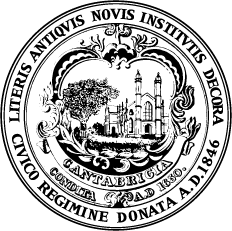Cambridge’s Alewife Stormwater Wetland project was recently named a 2014 Public Works Project of the Year by the American Public Works Association (APWA). The City's Department of Public Works, as the managing agency; P. Gioioso and Sons, Inc., as the primary contractor; and Kleinfelder/MWH/Bioengineering Group as the primary consultant; will all be presented with the national Project of the Year Award at APWA’s International Public Works Congress & Exposition Awards Ceremony in Toronto, Ontario, Canada August 17-20, 2014.
The APWA Public Works Projects of the Year awards promote excellence in the management and administration of public works projects, recognizing the alliance between the managing agency, contractor, consultant and their cooperative achievements.
Awarded in the Environment $25 to $75 million category, the Alewife Stormwater Wetland project demonstrates how innovative approaches to science, engineering and ecology can concurrently resolve infrastructure problems, enhance the environment and provide open-space resources to the community. This project is part of the federally mandated Boston Harbor Cleanup. Cambridge worked with Massachusetts Water Resources Authority (MWRA) to implement MWRA’s Long Term Combined Sewers Overflow (CSO) Control Plan for Alewife Brook, which required sewer separation and stormwater management to reduce CSOs to the Alewife Brook.
The goal of the wetland project was to store, attenuate and treat the newly separated stormwater before discharging to the Little River. In addition, the wetland helped restore the area’s natural hydrology; protect and enhance wildlife habitat; and improve recreational, educational and other cultural opportunities. While designing CSO and stormwater infrastructure, the Department of Public Works, and the engineering team collaborated with the Department of Conservation and Recreation to design features that provide public benefit and ecological value, meeting Alewife Reservation Master Plan goals. Innovation and collaboration in all project components was necessary to integrate the engineering project within the greater environment. The project employed complex and unique engineering components including bending wire technology, pilot tube auger bore trenchless technology, integrated hydraulics, and a nature‐based wetland design in a complex phased construction sequencing program to minimize impacts to wildlife and flora.
The 3.4 acre stormwater wetland and outfall was the cornerstone of the Alewife CSO plan, which started as a creative solution, and became a parkland gift to the community. Recreational amenities include a boardwalk and scenic overlooks, environmental education opportunities, an amphitheater designed with seating for a class of students, interpretive signage, and links to the Alewife Greenway Extension’s bike and pedestrian paths.
The Alewife Stormwater Wetland is a unique combination of water infrastructure that benefits and takes advantage of natural, sustainable techniques that also support environmental stewardship and community land use.


